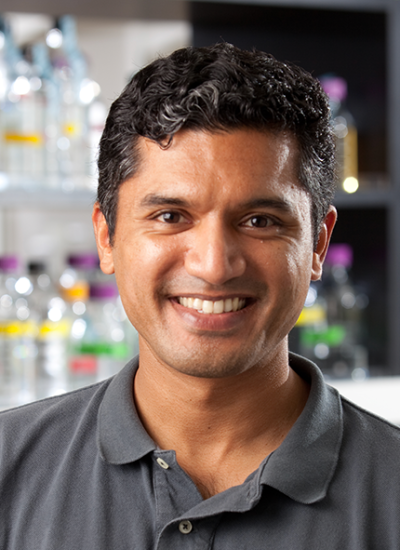Deepta Bhattacharya
Publications
In the absence of irradiation or other cytoreductive conditioning, endogenous hematopoietic stem cells (HSCs) are thought to fill the unique niches within the bone marrow that allow maintenance of full hematopoietic potential and thus prevent productive engraftment of transplanted donor HSCs. By transplantation of purified exogenous HSCs into unconditioned congenic histocompatible strains of mice, we show that approximately 0.1-1.0% of these HSC niches are available for engraftment at any given point and find no evidence that endogenous HSCs can be displaced from the niches they occupy. We demonstrate that productive engraftment of HSCs within these empty niches is inhibited by host CD4+ T cells that recognize very subtle minor histocompatibility differences. Strikingly, transplantation of purified HSCs into a panel of severe combined immunodeficient (SCID) mice leads to a rapid and complete rescue of lymphoid deficiencies through engraftment of these very rare niches and expansion of donor lymphoid progenitors. We further demonstrate that transient antibody-mediated depletion of CD4+ T cells allows short-term HSC engraftment and regeneration of B cells in a mouse model of B(-) non-SCID. These experiments provide a general mechanism by which transplanted HSCs can correct hematopoietic deficiencies without any host conditioning or with only highly specific and transient lymphoablation.
Hematopoietic stem cells (HSCs) are thought to reside in discrete niches through stable adhesion, yet previous studies have suggested that host HSCs can be replaced by transplanted donor HSCs, even in the absence of cytoreductive conditioning. To explain this apparent paradox, we calculated, through cell surface phenotyping and transplantation of unfractionated blood, that approximately 1-5% of the total pool of HSCs enters into the circulation each day. Bromodeoxyuridine (BrdU) feeding experiments demonstrated that HSCs in the peripheral blood incorporate BrdU at the same rate as do HSCs in the bone marrow, suggesting that egress from the bone marrow to the blood can occur without cell division and can leave behind vacant HSC niches. Consistent with this, repetitive daily transplantations of small numbers of HSCs administered as new niches became available over the course of 7 d led to significantly higher levels of engraftment than did large, single-bolus transplantations of the same total number of HSCs. These data provide insight as to how HSC replacement can occur despite the residence of endogenous HSCs in niches, and suggest therapeutic interventions that capitalize upon physiological HSC egress.
Although CD103-expressing dendritic cells (DCs) are widely present in nonlymphoid tissues, the transcription factors controlling their development and their relationship to other DC subsets remain unclear. Mice lacking the transcription factor Batf3 have a defect in the development of CD8alpha+ conventional DCs (cDCs) within lymphoid tissues. We demonstrate that Batf3(-/-) mice also lack CD103+CD11b- DCs in the lung, intestine, mesenteric lymph nodes (MLNs), dermis, and skin-draining lymph nodes. Notably, Batf3(-/-) mice displayed reduced priming of CD8 T cells after pulmonary Sendai virus infection, with increased pulmonary inflammation. In the MLNs and intestine, Batf3 deficiency resulted in the specific lack of CD103+CD11b- DCs, with the population of CD103+CD11b+ DCs remaining intact. Batf3(-/-) mice showed no evidence of spontaneous gastrointestinal inflammation and had a normal contact hypersensitivity (CHS) response, despite previous suggestions that CD103+ DCs were required for immune homeostasis in the gut and CHS. The relationship between CD8alpha+ cDCs and nonlymphoid CD103+ DCs implied by their shared dependence on Batf3 was further supported by similar patterns of gene expression and their shared developmental dependence on the transcription factor Irf8. These data provide evidence for a developmental relationship between lymphoid organ-resident CD8alpha+ cDCs and nonlymphoid CD103+ DCs.
Previously, we analyzed the proximal IL-4 promoter in directing Th2-specific activity. An 800-base pair proximal promoter conferred some Th2-selective expression in transgenic mice. However, this region directed extremely low reporter mRNA levels relative to endogenous IL-4 mRNA, suggesting that full gene activity requires additional enhancer elements. Here, we analyzed large genomic IL-4 regions for enhancer activity and interaction with transcription factors. The proximal IL-4 promoter is only moderately augmented by GATA-3, but certain genomic regions significantly enhanced GATA-3 promoter transactivation. Some enhancing regions contained consensus, GATA sites that bound Th2-specific complexes. However, retroviral transduction of GATA-3 into developing T cells induced IL-5 to full Th2 levels, but only partially restored IL-4 production. Thus, we propose that GATA-3 is permissive, but not sufficient, for full IL-4 enhancement and may act through GATA elements surrounding the IL-13/IL-4 gene locus.
Durable antibody production after vaccination or infection is mediated by long-lived plasma cells (LLPCs). Pathways that specifically allow LLPCs to persist remain unknown. Through bioenergetic profiling, we found that human and mouse LLPCs could robustly engage pyruvate-dependent respiration, whereas their short-lived counterparts could not. LLPCs took up more glucose than did short-lived plasma cells (SLPCs) in vivo, and this glucose was essential for the generation of pyruvate. Glucose was primarily used to glycosylate antibodies, but glycolysis could be promoted by stimuli such as low ATP levels and the resultant pyruvate used for respiration by LLPCs. Deletion of Mpc2, which encodes an essential component of the mitochondrial pyruvate carrier, led to a progressive loss of LLPCs and of vaccine-specific antibodies in vivo. Thus, glucose uptake and mitochondrial pyruvate import prevent bioenergetic crises and allow LLPCs to persist. Immunizations that maximize these plasma cell metabolic properties might thus provide enduring antibody-mediated immunity.


